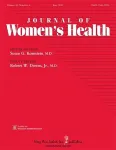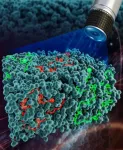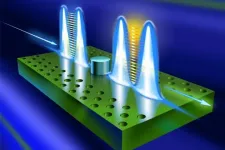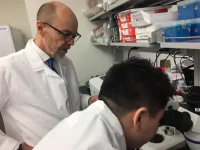To understand the future of hurricanes, look to the past
Researchers improve hurricane modeling by correcting for past sea surface temperatures
2021-06-29
(Press-News.org) The historic 2020 hurricane season, with its record-breaking 30 tropical storms and hurricanes, left in its wake hundreds of deaths in the United States, tens of billions of dollars in damages, and one important question: Is this what the future will look like?
While most climate scientists agree that hurricane severity, at least in terms of rainfall, will likely increase as the planet warms, there remains uncertainty about the future frequency of hurricanes. Today's climate models offer a range of possible futures, some predicting an increase in North Atlantic hurricane frequency, others a decrease. These conflicting results beg the question: are these models even capable of predicting hurricane frequency or are they missing some vital process?
"In order to understand whether these models are credible we need to see if they can reproduce the past," said Peter Huybers, Professor of Earth and Planetary Sciences and of Environmental Science and Engineering at the Harvard John A. Paulson School of Engineering and Applied Sciences (SEAS). "Today's models do a good job simulating the past 40 years of hurricanes but as we move back in time, the models and data increasingly diverge. This raises an important question: if models do not reproduce the long-term history of hurricanes, should we trust their long-term predictions?"
In a new paper published in Science Advances, Huybers and a team of researchers found that these models are, in fact, capable of reproducing the long-term history of hurricanes -- but only if historic sea surface temperatures are corrected. The research highlights the importance of understanding sea surface temperatures patterns and suggests that a better understanding of these patterns could reconcile conflicting model predictions and improve our understanding of how climate change will impact future hurricane frequency.
This paper builds off previous research in which Huybers and his team identified bias in historic sea surface temperature measurements and developed a comprehensive approach to correct the data. That paper, published in 2019, led to a better understanding of how oceans warmed over time. Here, the researchers apply the same correction to help model historic hurricane frequency.
Sea surface temperature plays a critical role in the formation of hurricanes.
"The frequency of Atlantic hurricanes depends on the pattern of sea surface temperatures, particularly the warmth of the subtropical North Atlantic, an area that roughly extends from the tip of Florida to Cape Verde, relative to the tropical oceans as a whole," said Duo Chan, a former graduate student at SEAS and first author of the paper.
When the subtropical North Atlantic is relatively warm, it leads to more atmospheric convection and more Atlantic hurricanes. When the subtropical North Atlantic is relatively cool, hurricane formation rates decrease, in part because of winds that shear apart proto-storm systems.
When today's climate models try to reproduce past hurricane seasons, they generally predict too few between 1885-1900 and too many between 1930-1960. These models, however, all rely upon historic sea surface temperatures that indicate a relative cool subtropical Atlantic at the turn of the 20th century and a warm Atlantic in the mid-20th century.
But, as Huybers and Chan demonstrated in previous research, those historic sea surface temperatures contain systematic errors. Their corrected sea surface temperatures show a warmer subtropical North Atlantic from 1885 to 1920 and a relatively cooler one between 1930 and 1960. These adjustments bring hurricane frequency in line with observations.
"Our corrections to sea surface temperature patterns were independently developed, and significantly improve the skill with which models reproduce historical hurricane variations," said Huybers. "These results increase our confidence both in historical sea surface temperatures and our models and provide a more-firm basis from which to explore how climate change will influence hurricane frequency going forward."
INFORMATION:
The research was co-authored by Gabriel A. Vecchi and Wenchang Yang of Princeton University, and was partly supported by the Harvard Global Institute.
ELSE PRESS RELEASES FROM THIS DATE:
2021-06-29
HOUSTON - (June 29, 2021) - When you think about trade and market relationships, you might think about brokers yelling at each other on the floor of a stock exchange on Wall Street. But it seems one of the basic functions of a free market is quietly practiced by fungi.
New research from a Rice University economist suggests certain networks of fungi embrace an important economic theory as they engage in trading nutrients for carbon with their host plants. This finding could aid the understanding of carbon storage in soils, an important tool in mitigating climate change.
A research paper entitled "Walrasian equilibrium behavior in nature" is available online and will appear in an upcoming edition of Proceedings of the National Academy of Sciences. Ted Loch-Temzelides, ...
2021-06-29
Among low-income, uninsured, or publicly insured women ages 25-64 years who were not up to date on cervical cancer screening, 72% perceived financial barriers to screening. The most commonly reported barriers were screening appointment costs (71%) and follow-up/future treatment costs (44%), according to a study published in the peer-reviewed Journal of Women’s Health. Click here to read the article now.
Screening is effective at reducing the incidence of and mortality associated with cervical cancer. However, disparities exist in cervical cancer incidence and mortality and in cervical cancer screening based ...
2021-06-29
Langerhans cell histiocytosis (LCH) is a rare cancer involving dendritic cells, a type of white blood cell that usually helps defend against infections. The current standard of care for LCH, chemotherapy, cures fewer than half of patients.
"Our research team focuses on identifying the causes of LCH so that we can develop better therapies for patients," said Dr. Rikhia Chakraborty, assistant professor of pediatrics - hematology and oncology at Baylor College of Medicine.
Most cells in LCH lesions are not abnormal dendritic cells but other invading immune cells, such as T cells, that are recruited to sites of disease. The contribution of T cells and other immune cells to LCH disease is not known. Chakraborty and her team at the Texas Children's Cancer Center Histiocytosis Program characterized ...
2021-06-29
Mate choice is important for females, who often invest much more energy in offspring than males. However, being too selective is a bad idea, as they might end up not mating at all. Biologists have wondered for a long time how females optimize their chances. Scientists at the University of Groningen have performed experiments with fruit flies that reveal the explanation: mating induces a behavioural change in female flies that makes them more choosy than when they are virgins. The results were published on 21 June in Nature Ecology and Evolution.
The fourteenth-century French philosopher Jean Buridan described a donkey who starved to death because he couldn't choose between two bales of hay. Evolutionary biologists have their own version of this decision-making ...
2021-06-29
University of Colorado Boulder researchers have discovered that minuscule, self-propelled particles called "nanoswimmers" can escape from mazes as much as 20 times faster than other, passive particles, paving the way for their use in everything from industrial clean-ups to medication delivery.
The findings, published this week in the Proceedings of the National Academy of Sciences, describe how these tiny synthetic nanorobots are incredibly effective at escaping cavities within maze-like environments. These nanoswimmers could one day be used to remediate contaminated ...
2021-06-29
Research from the McKelvey School of Engineering at Washington University in St. Louis has found a missing piece in the puzzle of optical quantum computing.
Jung-Tsung Shen, associate professor in the Preston M. Green Department of Electrical & Systems Engineering, has developed a deterministic, high-fidelity two-bit quantum logic gate that takes advantage of a new form of light. This new logic gate is orders of magnitude more efficient than the current technology.
"In the ideal case, the fidelity can be as high as 97%," Shen said.
His research was published in May 2021 in the journal Physical Review A.
The potential of quantum computers is bound to the unusual properties of superposition -- the ability of a quantum system to contain many distinct properties, or states, ...
2021-06-29
Irvine, Calif., June 29, 2021 - Fireworks are synonymous in the United States with the celebration of Independence Day and other special events, but the colorful displays have caused a growing risk to public safety in recent years, according to a study by environmental health researchers at the University of California, Irvine.
Relying on real-time air quality measurements crowdsourced from a network of more than 750 automated sensors distributed throughout California, scientists from UCI's Program in Public Health found that short-term, extremely high-particulate-matter air pollution from the widespread ...
2021-06-29
This lobster tale begins a few years ago when the proprietor of a northeastern seafood restaurant publicly asserted that exposing lobsters to a little cannabis prior to cooking produced notable changes in their behavior and a less dramatic scene in the kitchen for all concerned, which was the Maine thing.
In a paper published online June 29, 2021 in the journal Pharmacology Biochemistry and Behavior, a team led by researchers at University of California San Diego School of Medicine, report on efforts to answer that burning, boiling and baked question. They obtained live lobsters (Homarus americanus) from a supermarket and exposed the crustaceans to up to 60 minutes of vaporized Δ9-tetrahydrocannabinol (THC) -- the principle psychoactive component of cannabis -- then ...
2021-06-29
June 29, 2021 - Nutley, NJ - Scientists from the Hackensack Meridian Center for Discovery and Innovation, working with collaborators from across the globe, uncovered the mechanism of action of a novel anti-tuberculosis drug that they have helped develop.
The new findings show how the enzyme inhibitor triaza-coumarin, or TA-C, is metabolized by the TB germs, which makes it effective in inhibiting the disease from within, like in a "Trojan horse" attack, according to the new paper in the journal Proceedings of the National Academy of Sciences.
"This is a promising new direction of research," said Thomas Dick, member of the CDI faculty. "We are hoping this work can make a difference in the ongoing fight against TB."
"The scientists at the CDI who specialize in ...
2021-06-29
For many years, researchers have been focused on developing technologies that can help us fight the imminent climate change crisis. They have one goal in common: finding sustainable energy sources that can replace the environmentally toxic fossil fuels. "Photocatalysts" that drive an artificial process that replicates photosynthesis (in which solar energy is converted to useful materials) are promising in this regard, given that we are able to develop the technology needed for them. Crystalline materials, such as strontium titanate (SrTiO3), which can serve as "photocatalysts" in solar devices, can lead us in the direction.
SrTiO3 is attractive owing to various other reasons ...
LAST 30 PRESS RELEASES:
[Press-News.org] To understand the future of hurricanes, look to the past
Researchers improve hurricane modeling by correcting for past sea surface temperatures





